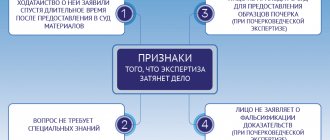VTEC (medical labor expert commission) conducts an examination of the loss of ability to work and assigns a disability group to the patient or refuses such a request if it turns out that the ability to work has not been lost.
The tasks of VTEK include an expert assessment of not only the patient’s health status, but also the conditions and nature of his work. It is based on these criteria that a decision on loss of ability to work is made. The commission also establishes the time of onset of disability, determines the group of disability and the reasons for its onset. These can be various injuries, general or occupational diseases, work injuries, disability since childhood and other reasons. VTEK determines the percentage of a person’s disability, recommends the necessary measures to improve health and restore working capacity, as well as the types of activities available to a disabled person.
If necessary, the commission carries out a repeated examination and examination of the disabled person within the established time limits, studying the dynamics of the course of the disease and the causes of disability.
What is a medical and social examination?
A medical and social examination (MSE) is a study conducted by a special commission, based on the results of which a decision is made to recognize a citizen as disabled and assign him a disability group.
During the MSA process, the patient’s health status, the presence of chronic diseases, and social status are assessed. The assessment is carried out comprehensively by a commission consisting of medical workers, a psychologist and a social worker.
The examination is the responsibility of the medical and social examination bureau. Specialists analyze the clinical, everyday, functional, and psychological indicators of a citizen.
You should know! The system of ITU state institutions includes the federal bureau, the main bureau of the corresponding subject of the Russian Federation, subordinate to the Ministry of Labor, the main bureau subordinate to other executive authorities, branches of the ITU bureau in regions and cities.
ITU and VTEK
The medical and social expert examination began in 1995 , when Federal Law No. 181-FZ was adopted, which (namely, its Article 7) includes the definition of MSA as an event to help Russian disabled people. This procedure replaced the VTEC, that is, the medical labor commission.
There is no significant difference between these two concepts , except that MSA also applies to people with disabilities who have not reached legal age and its departments are better equipped due to the expansion of funds and opportunities for state support.
Who needs to undergo a medical and social examination?
Any citizen who has a serious illness that interferes with his physical activity and normal social life has the right to apply for a medical and social examination.
The following diseases are the basis for MSE:
- diabetes;
- visual and hearing impairment with progressive dynamics;
- oncological diseases;
- acute circulatory disorders of the brain and heart, as well as their consequences;
- diseases of the musculoskeletal system that interfere with normal movement.
Depending on the degree of disability due to health problems, the ITU commission makes a decision to establish disability or refusal. When establishing disability, a choice is made between three groups: the third - in the presence of a disease that reduces the ability to work, the second - in the case of a serious illness that prevents you from engaging in work activities, the first - in case of a persistent impairment of health, which excludes the ability to work and care for yourself independently.
Extension of sick leave
In what cases is an employee issued a sick leave certificate?
Diseases for assignment of disability group 1
- total blindness of both eyes;
— abnormalities of the central nervous system and mental disorders;
- severe contracture of the joints of the limbs;
— clinically confirmed fact of the presence of malignant tumors;
- non-removable and chronic diseases of the cardiovascular system;
- a condition of the hands in which a person cannot do without outside help, that is, he has no fingers, or there are only stumps;
- impaired renal or respiratory function.
Why is a medical and social examination needed?
A medical and social examination is necessary for persons whose health is impaired to such an extent that obstacles to normal life have arisen.
ITU solves several problems:
- A citizen is assigned a disability, which gives him the right to receive financial support and benefits.
- It is determined whether it is necessary to develop a rehabilitation program for a disabled person to restore or compensate for lost body functions.
- The disability group is determined for the assignment of a labor or social pension.
- A re-examination for disability is carried out to maintain or remove the disabled status.
- The cause of death of the disabled person is determined.
Important! After receiving a disability, a citizen has the right to expect to be provided with preferential medications, prostheses, pension supplements, discounted travel on transport, and subsidies for utility bills.
How is a medical and social examination carried out: step-by-step instructions?
Medical and social examination is a complex procedure consisting of several stages.
The citizen will need to perform the following actions:
- Get a referral to ITU.
- Submit an application for conducting an ITU.
- Prepare documents for passing the ITU.
- Receive an invitation to ITU.
- Pass the examination.
- Receive the commission's conclusion.
Let's look at each stage in more detail.
Stage 1 – Receiving a referral to ITU
A citizen wishing to receive a disability must make an appointment with the attending physician. First, an examination will be scheduled to make an accurate diagnosis. If necessary, the doctor will provide outpatient treatment or refer the patient to the hospital.
If, based on the results of treatment, health problems persist, the doctor will record the necessary information in the medical record and issue a referral to medical examination. The document must be drawn up in a medical institution where the citizen is regularly observed and treated.
We must remember! The referral must be certified by the seal of a medical organization. It also contains the signatures of three doctors.
Stage 2 – Drawing up an application to the ITU
After receiving the referral, the citizen fills out an application for a medical and social examination.
It must contain the following information:
- name of the ITU office;
- Full name of the citizen, passport details, SNILS, residential address, telephone;
- who needs an examination;
- the purpose of the ITU;
- date and signature.
You should know! The application can be submitted in paper form in person, through a representative, by mail or electronically through the State Services portal.
Stage 3 – Preparation of documents for ITU
The application must be accompanied by documents confirming the validity of the application for disability determination. The list includes:
- passport or other identification document;
- birth certificate (for citizens under 14 years of age);
- referral to ITU;
- medical documents (medical card, extract from the card);
- production characteristics;
- pedagogical characteristics (for a child).
Additionally, you may need SNILS, a pension certificate, a certificate from the Pension Fund.
Step 4 – Receiving an invitation to ITU
Within 30 days, the citizen is sent an invitation with the date and time for which the examination is scheduled. The notice can be delivered in person, by mail, or via SMS message. If a citizen applies for MSE through the State Services portal, an invitation is sent to his personal account.
Stage 5 – Passing the examination
The examination is carried out at the bureau at the citizen’s place of residence. If a citizen cannot visit the department for health reasons, MSA is carried out:
- at home;
- in hospital;
- in absentia based on documents.
During the examination, the commission examines the citizen, examines the documents submitted with the application, and analyzes social, professional, labor, psychological and other data about the patient.
Based on the results of the examination, a decision is made by a majority vote to recognize the citizen as disabled or to refuse to establish disability.
Stage 6 – Obtaining the conclusion of the ITU commission
The decision made is announced to the citizen in the presence of all members of the commission. If necessary, explanations are given regarding the grounds for assigning a disability group or refusing recognition as a disabled person.
The result of the examination is drawn up in the form of an act, which is signed by the head of the bureau and members of the commission. To give the document legal force, the seal of the institution is affixed. The act is kept in the bureau for 10 years
The citizen is issued:
- certificate of disability indicating the group;
- individual rehabilitation program.
Important! The act describes the conclusions of all specialists who participated in the ITU, a list of documentation, and basic information that became the basis for making an expert decision.
Procedure
All people who go for an examination for the first time are interested in how the disability commission goes. This procedure always consists of the following steps:
- Obtaining a referral from your attending physician and collecting the necessary documentation.
- Passing the commission itself, which is attended by medical specialists from different fields. They carefully study the documents confirming the patient’s condition. In addition, doctors have the right to examine the patient and ask him questions regarding his health, living conditions and working conditions. The entire procedure is recorded in a special protocol of the commission.
- Then the experts vote and make a general decision. It is issued to the applicant directly on the day of the examination.
If the members of the commission could not reach a consensus, then the patient may be scheduled for a re-examination. The procedure for conducting MSE is also prescribed at the legislative level in Chapter IV of PP No. 95 of February 20, 2006.
How to appeal the result of a medical and social examination?
A citizen who believes that the commission made an incorrect decision based on the results of the ITU has the right to file a complaint. Appeals are carried out in two forms: administratively and through the courts. A citizen can start with an administrative appeal or immediately go to court.
Administrative procedure for appealing the ITU result
In the case of an administrative appeal, the decision of the ITU is reviewed by a higher bureau. Thus, acts of district and city bureaus are appealed to the main ITU bureau of a constituent entity of the Russian Federation, which in turn are contested in the Federal ITU Bureau.
You must file a complaint against the bureau's decision within one month. The appeal must be made in writing and must contain the following information:
- name of the bureau whose decision is being appealed;
- Full name of the citizen, his place of residence, phone number, email;
- date and content of the act being appealed;
- arguments about disagreement with the bureau's decision;
- date and signature.
The complaint is submitted through the bureau that conducted the examination, or is immediately sent to a higher authority. Within a month after receiving the application, a new examination is carried out, based on the results of which the decision is canceled or left in force. A response about the decision made is sent to the applicant.
Appealing the ITU decision through court
An appeal of the decision of the ITU Bureau through the court is carried out according to the rules established by the Code of Civil Procedure of the Russian Federation. The statement of claim must be filed with the district or city court at the location of the department.
The claim must contain the following mandatory information:
- name of the court;
- Full name of the citizen, his place of residence, phone number, email;
- the name of the ITU bureau whose decision is being appealed;
- description of violations committed by the department during the MSA;
- references to evidence supporting the citizen’s arguments;
- references to legal norms;
- list of applications;
- date and signature.
All documents that were drawn up during the examination are attached to the claim.
Sample claimThe dispute is resolved through legal proceedings and examination of medical records. Based on the results of the consideration of the case, a decision is made that comes into force within a month.
Important! If the plaintiff or defendant does not agree with the decision, it can be appealed to the appellate or cassation instance. If necessary, the interested person has the right to contact the supervisory authority.
Final statement
The document is provided after the person has been examined by the ITU office. The document records the final data and the verdict. The certificate is provided to all people recognized as disabled. Additionally, the degree of ability to work that was awarded to the person is recorded. The specialist will indicate whether the applicant needs to be transferred to lighter work.
The ITU certificate of disability is provided immediately after the decision is made. The document is handed over to the person undergoing the examination. The corresponding extract is sent to the Pension Fund or Social Security.
There are a number of requirements for the document. It is issued on a pink form. To know in advance what the MSEC certificate looks like, it is recommended to study the sample by reading its photo.
It is important that the certificate that the disabled person receives contains the following details:
- series and number;
- information about the person to whom the document is provided;
- date of assignment of disability;
- established group, degree and cause of disability;
- the moment at which the disability begins to take effect;
- ITU seal and manager’s signature.
Links to documents:









